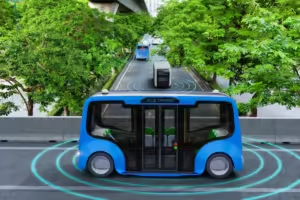Aviation plays a vital role in connecting the world, but it also faces significant challenges. Rising operational costs, strict safety requirements, and growing passenger traffic have put pressure on the industry. Airlines and airports are constantly looking for ways to improve efficiency while maintaining the highest safety standards.
Artificial Intelligence is now emerging as a valuable tool in aviation. From predictive maintenance to smarter air traffic management, AI is helping airlines and airports operate more effectively while ensuring safer skies for passengers.

The Challenges of Modern Aviation
Running an airline or airport is a constant balancing act. Every flight requires coordination between aircraft, pilots, crew, and ground operations. Despite technological progress, the industry continues to face major challenges:
- High operating costs: Fuel remains one of the largest expenses, and airlines must find ways to cut costs without reducing service quality.
- Safety risks: Human error and unexpected technical failures, though rare, remain among the biggest concerns.
- Congestion: With global passenger traffic rising, skies and airports are becoming crowded, leading to more delays.
- Maintenance issues: Sudden equipment failures disrupt schedules and add significant costs.
- Environmental pressures: Airlines are under pressure to reduce emissions and move toward sustainable practices.
These challenges highlight the need for smarter systems that predict issues, optimize resources, and streamline operations.

The Role of AI in Aviation
AI is transforming aviation by using data and automation to support decision-making. It doesn’t replace human expertise instead, it acts as a powerful assistant that improves safety and efficiency.
- Decision support for pilots and crew: AI processes real-time data like weather updates, aircraft performance, and traffic conditions to provide actionable insights. This helps crews make quicker, more informed decisions.
- Predictive maintenance: By analyzing sensor data, AI identifies early signs of component wear or failure. Fixing issues before they escalate prevents costly delays and improves safety.
- Automation of repetitive tasks: AI takes over routine checks and processes, freeing up pilots, engineers, and staff to focus on higher-priority tasks.
- Operational optimization: From flight schedules to baggage handling, AI ensures resources are used more effectively, reducing delays and improving passenger satisfaction.
Together, these capabilities make AI a cornerstone of modern aviation operations.

AI in Enhancing Aviation Safety
Safety is aviation’s highest priority, and AI is adding new layers of protection.
- Predictive maintenance: By continuously analyzing engine and system data, AI detects problems before they become critical, reducing both downtime and risks.
- Real-time monitoring: AI can track thousands of parameters at once, spotting even subtle anomalies during flight, which allows quick corrective action.
- Air traffic management: Smarter algorithms help optimize routes, reduce mid-air conflicts, and manage crowded skies more effectively.
- Pilot training: AI-powered simulators create realistic scenarios, including rare emergencies, helping pilots build confidence in handling unexpected situations.
- Weather forecasting: AI models provide highly accurate forecasts, helping flights avoid turbulence, storms, and other hazardous conditions.
With these applications, AI complements human expertise and strengthens aviation’s already strong safety record.

AI in Improving Operational Efficiency
Efficiency is just as important as safety, and AI is helping airlines and airports run more smoothly.
- Route optimization: By analyzing weather, fuel use, and air traffic, AI suggests the most efficient paths, saving both time and fuel while cutting emissions.
- Baggage and cargo management: AI-powered tracking reduces mishandling and speeds up loading and unloading, making the process faster and more reliable.
- Passenger flow management: AI analyzes crowd movement to predict congestion at check-in, security, and boarding. This ensures smoother airport operations and shorter waiting times.
- Scheduling and resource planning: AI helps match crew availability with flight schedules and ensures ground operations like refueling and gate assignments are on track, minimizing delays.
- Customer service: AI-driven chatbots and assistants handle bookings, provide flight updates, and even offer personalized recommendations, making travel more convenient for passengers.
These improvements help reduce costs, minimize delays, and create a better travel experience for passengers.

Key Benefits of AI in Aviation
The adoption of AI delivers clear benefits across the industry:
- Stronger safety standards: Real-time monitoring and predictive tools reduce risks.
- Lower operational costs: Optimized resource use helps airlines cut expenses.
- Reduced fuel consumption: Smarter flight paths mean lower emissions and costs.
- Improved passenger services: Faster check-ins, fewer delays, and personalized support enhance the journey.
- Efficient traffic management: AI reduces congestion, ensuring smoother skies.
AI is not just an upgrade, it’s a strategic solution that addresses aviation’s most pressing challenges.

Conclusion
Artificial Intelligence is no longer just a futuristic idea, it is becoming an essential part of aviation. By strengthening safety and improving operations, AI helps airlines and airports meet the demands of global air travel without compromising reliability.
Importantly, AI doesn’t replace human expertise. Instead, it works alongside pilots, engineers, and staff, giving them real-time insights and predictive tools that lead to smarter decisions. From guiding pilots through difficult weather to helping maintenance crews detect issues early, AI acts as a trusted partner in aviation.
As the industry faces increasing passenger numbers, tighter schedules, and sustainability goals, AI is shaping a future where aviation is safer, more efficient, and more sustainable.
With AI, air travel is not just adapting, it is innovating for the future of flight.












